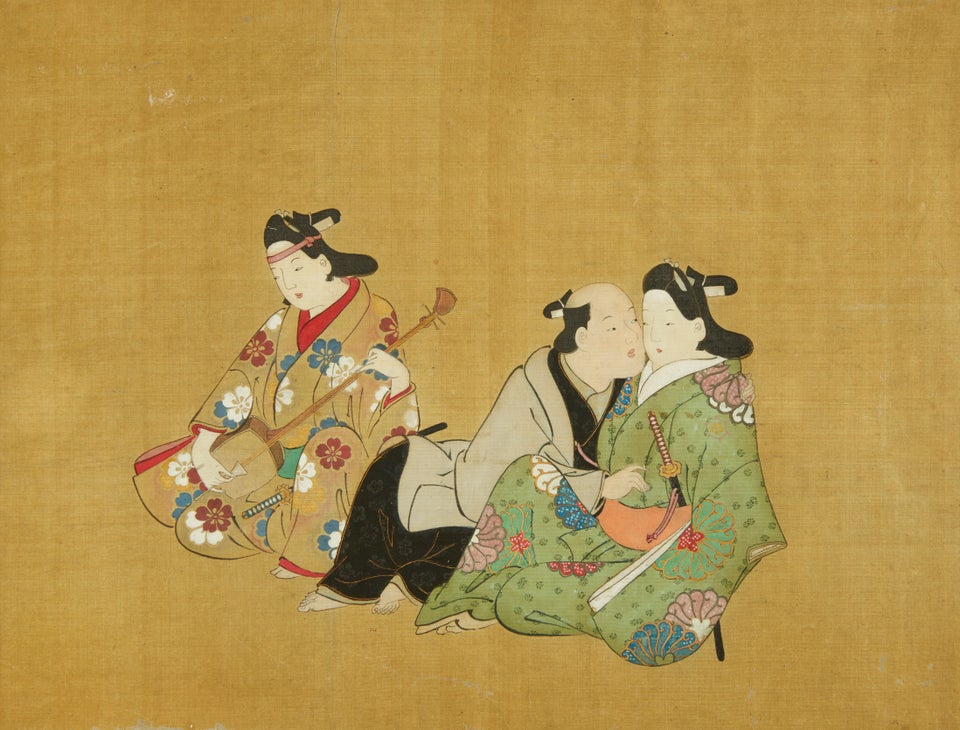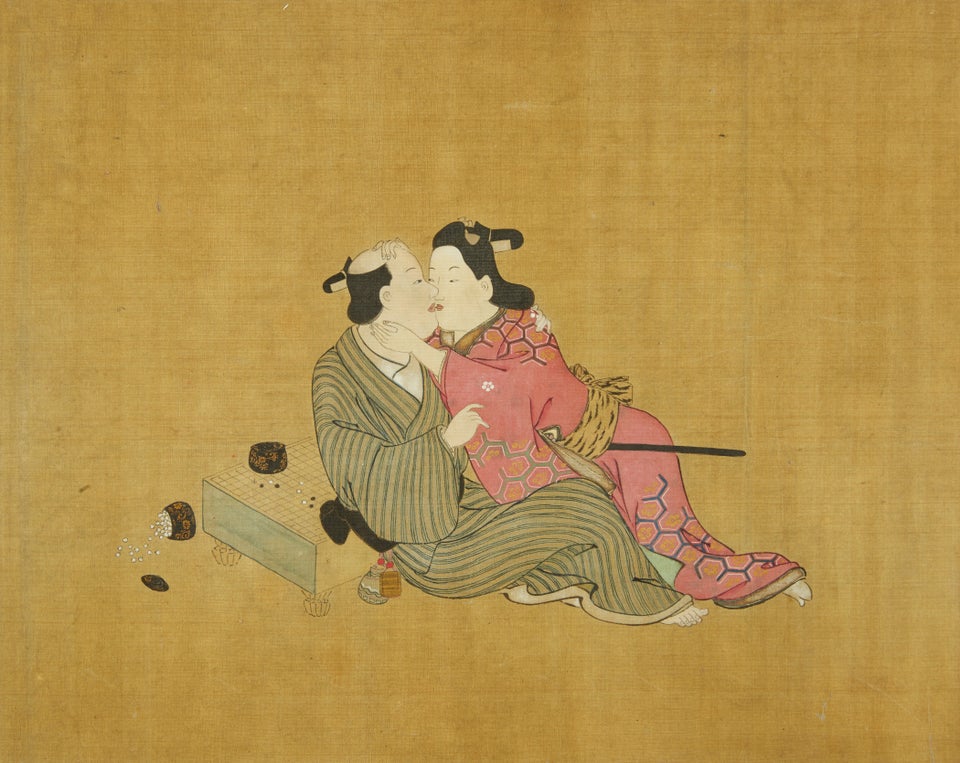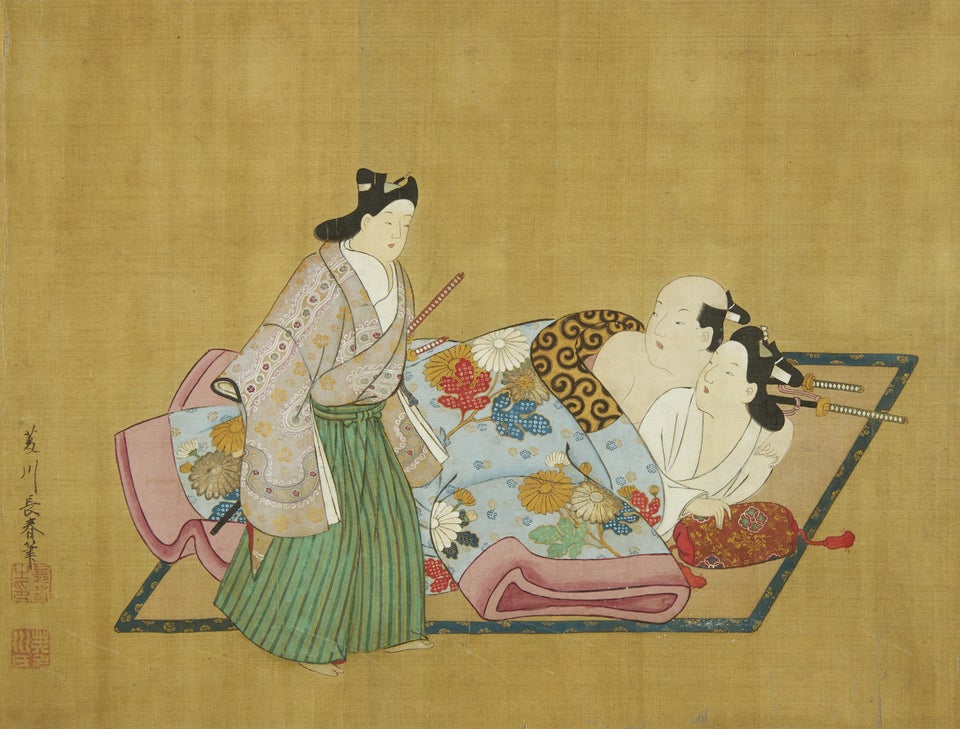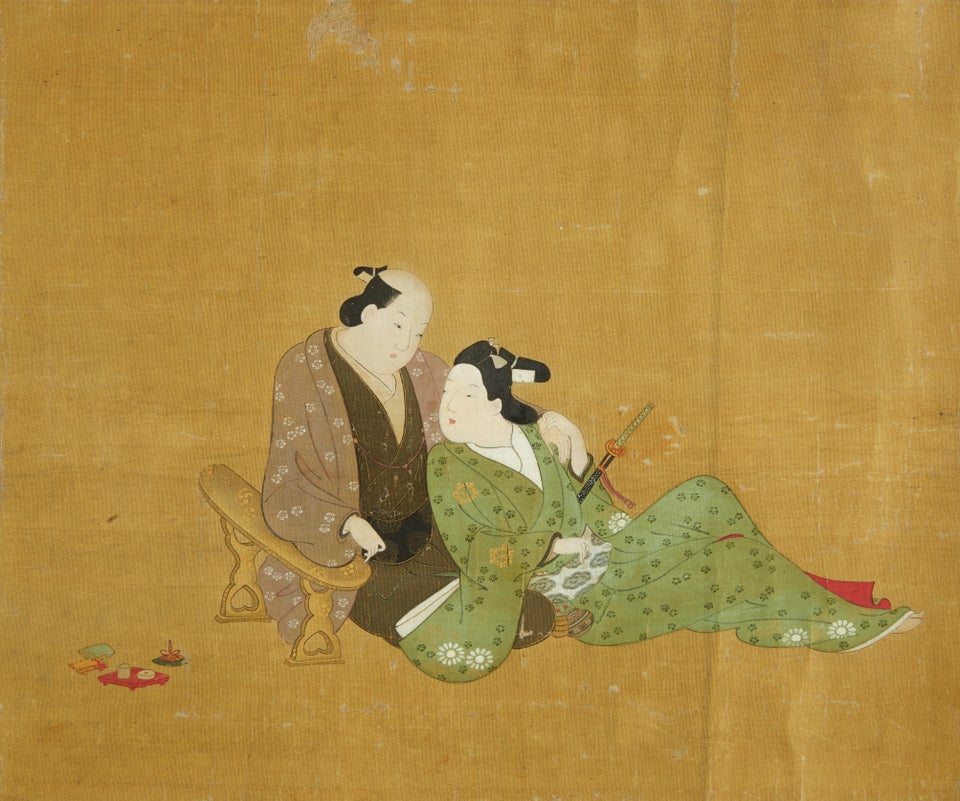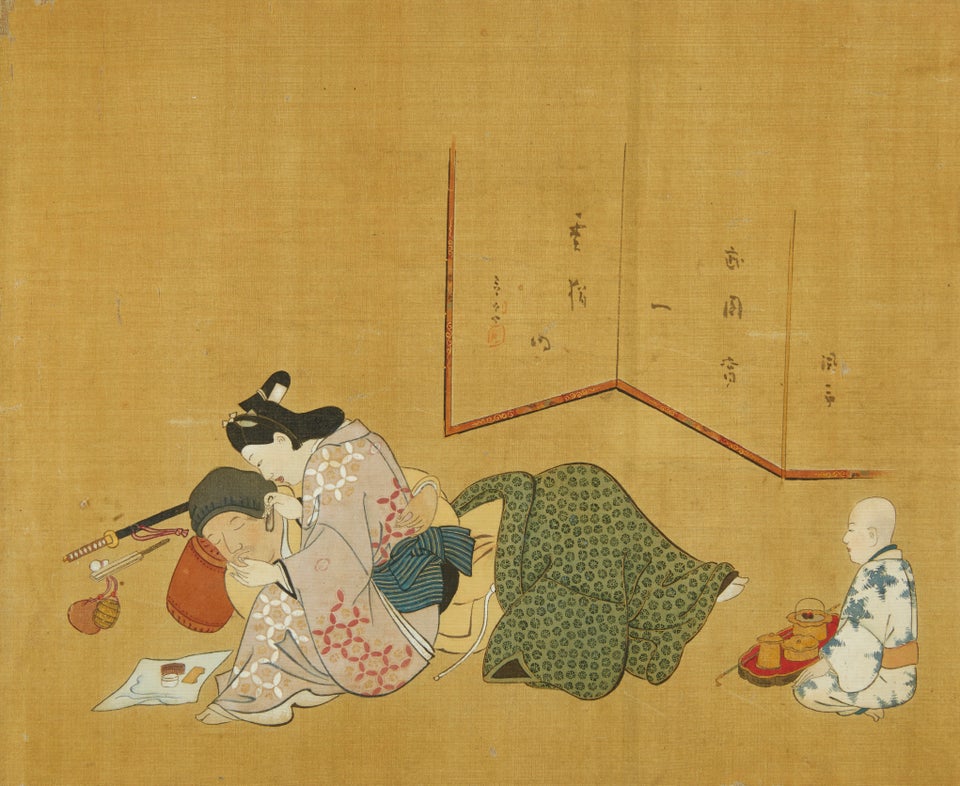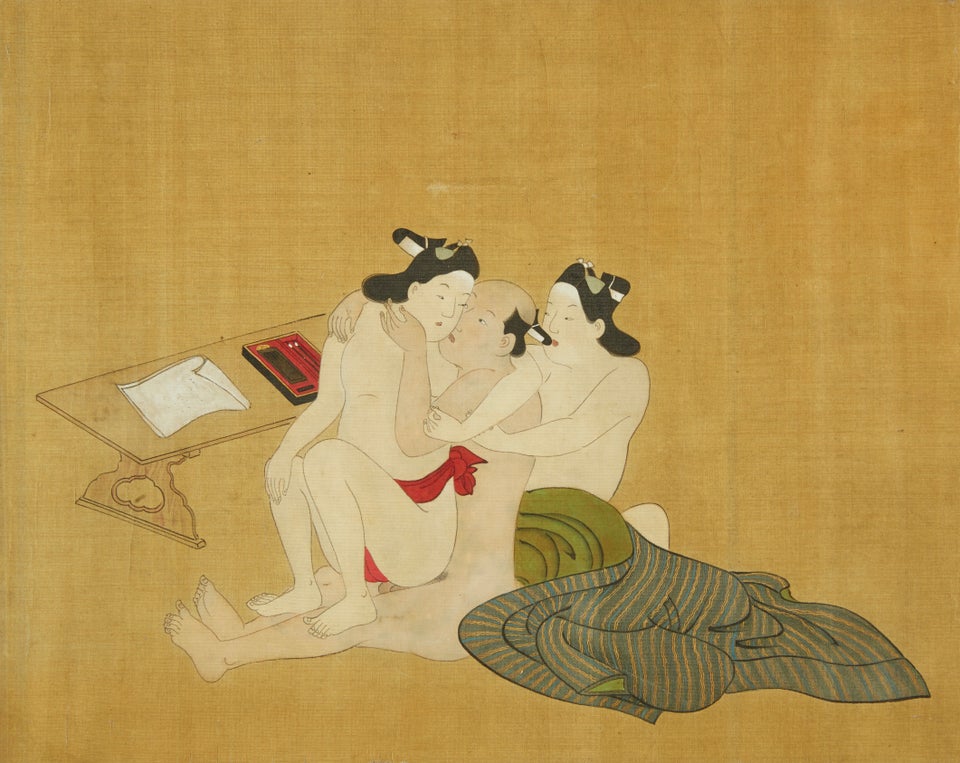Warning: This article contains nudity and may not be appropriate for work environments.

Japan's Edo period, stretching from the 17th to 19th century, was characterized by economic growth and a rigid social order, both of which worked together to bolster a before unrealized interest in art, culture, entertainment and, yes, sex.
While most marriages at the time were arranged -- and between a man and a woman -- sex between two men was not at all uncommon, though often kept out of public view. For the most part, such erotic encounters were allocated to three spheres: red-light style pleasure districts, kabuki theater, and shunga, or erotic art.
Artistic representations of erotic encounters between two men, known as nanshoku, are harder to find in the annals of shunga prints than images of sexually skilled octopi. However, a wildly rare shunga handscroll by artist Miyagawa Choshun, which has been shielded from public view since the 1970s, depicting man-on-man loving, has been recently rediscovered by Bonhams auction house.
I believe a yaaaaaas, kings is in order.
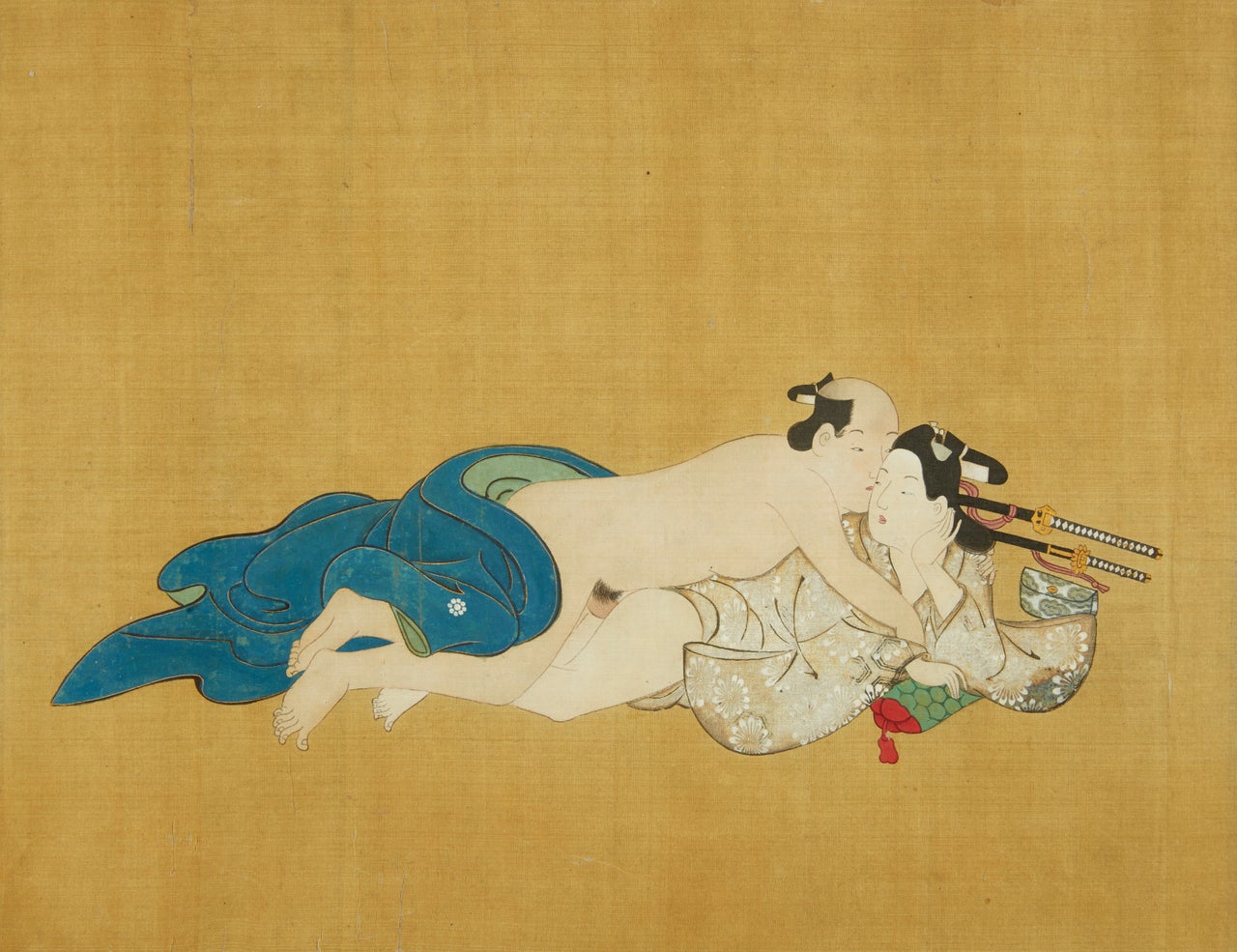
"In the strictly regulated society of Edo period Japan, it was not unusual for people to yearn for circumstances and opportunities not afforded them by birth," Bonhams' Director of Japanese Art Jeff Olson said in a press statement. "For most, costly visits to the pleasure quarters were out of reach, so illustrated erotica was the next best thing."
While most shunga prints frame the genitals front and center, nanshoku works focus more on the tender romance of the relationship. Think of them as the soft-core alternative to hardcore porn. The pairings normally consist of an older man and a younger partner, dressed in an ornate kimono and traditional woman's hairstyle. Artistic depictions often muse on the luxurious details of the young lover's garments and appearance, so maybe they're more like Edo's version of a rom-com.
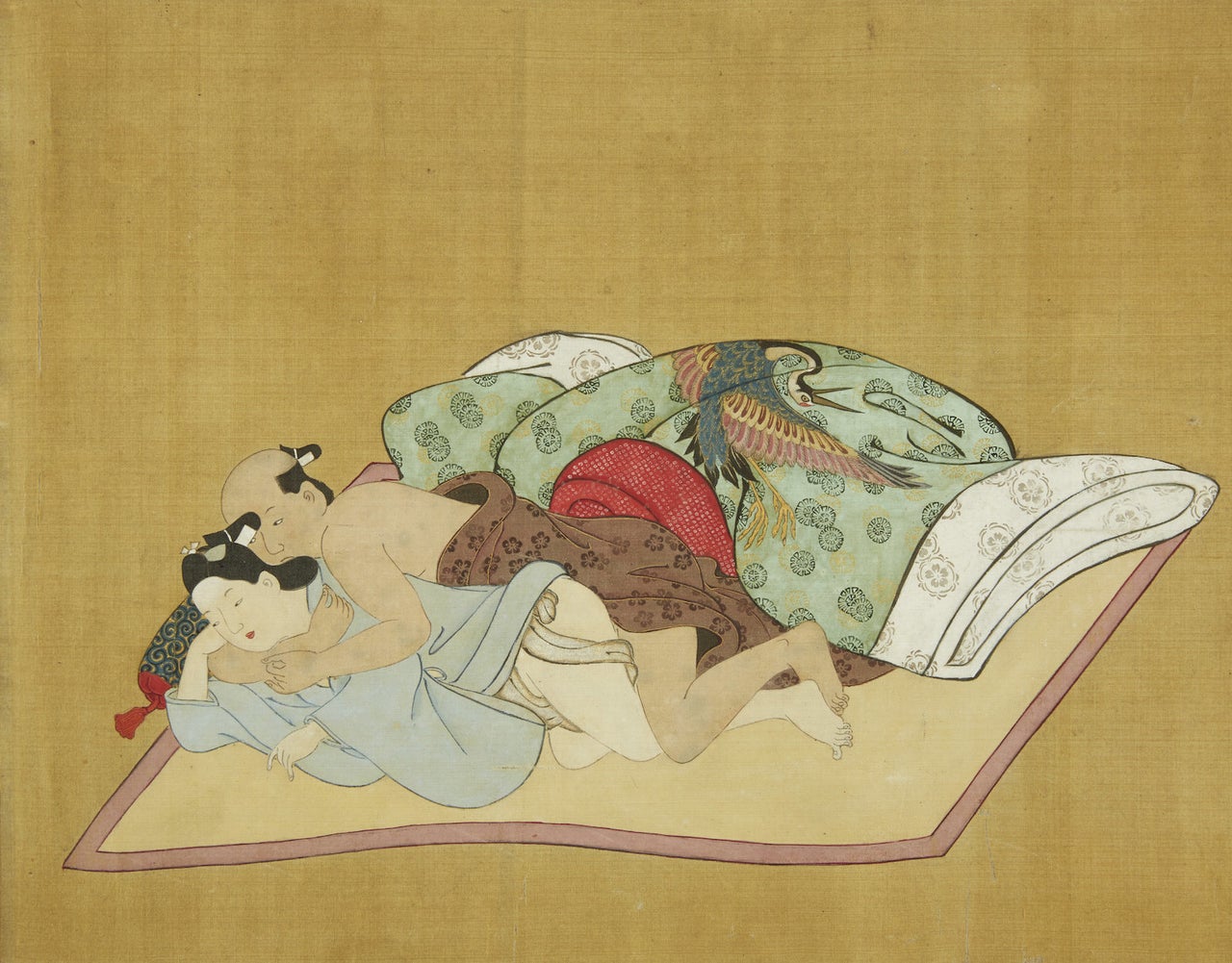
Choshun's striking handscrolls are at once minimalist in their color-blocked elegance and grandiose in their detailed renderings of kimonos and tricky-looking sexual positions. The lovers are rendered in a gold-tinted, floating world, swallowed up by the fantasy of their own desires.
The exciting rediscovery was included in an auction at Bonham's this week, selling for $37,500, as part of the eighth annual Asia Week New York, a celebration to promote and affirm the cultural importance of Asian art. See more images from the handscroll below.
